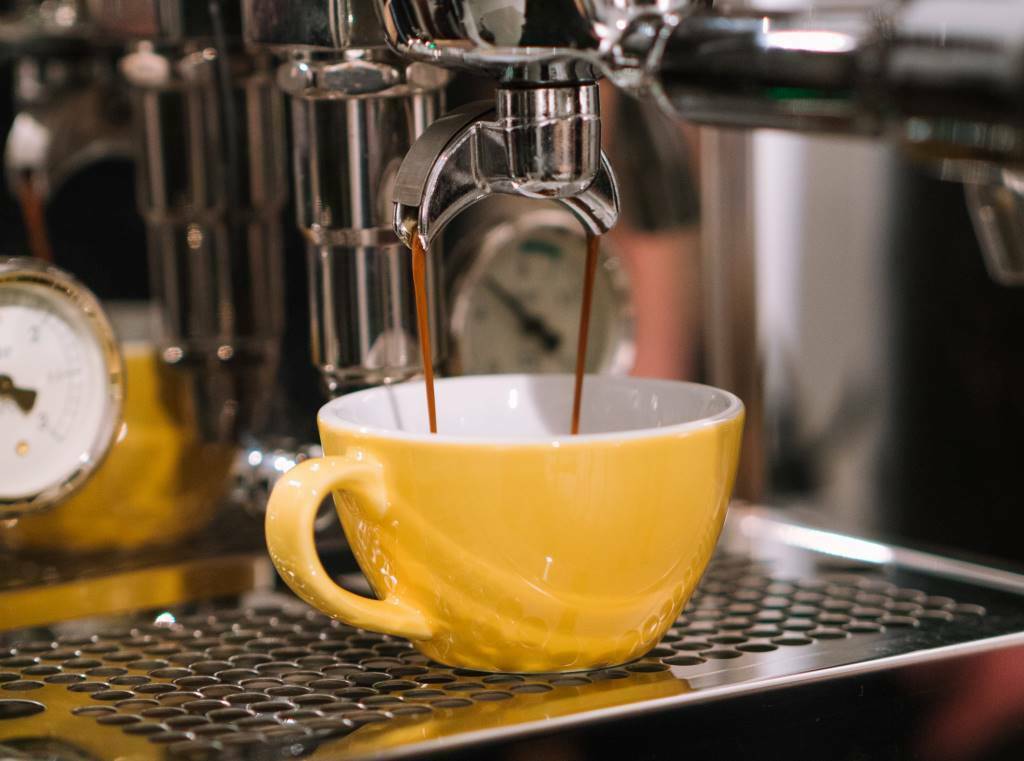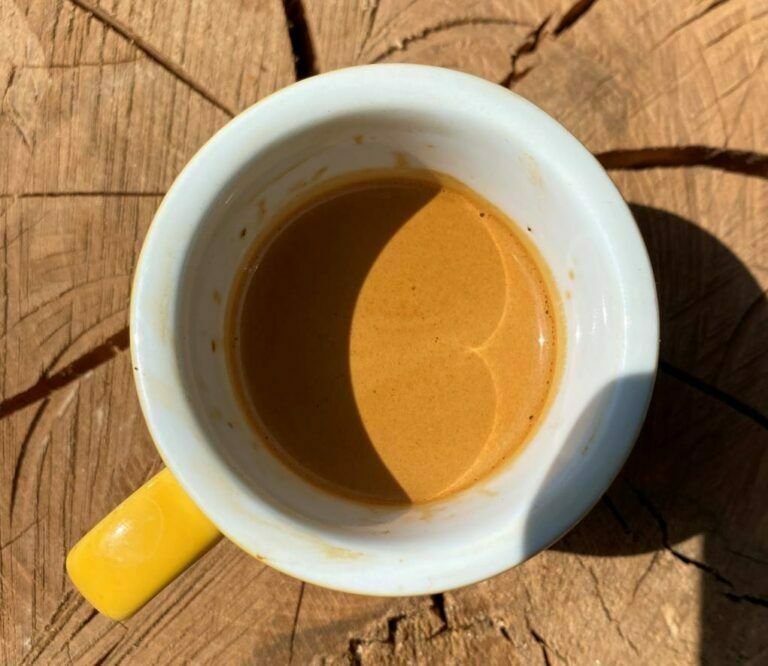Brewing espresso coffee can be both really rewarding and insanely frustrating. Often it is a few grams or a few seconds that is the difference between success and failure. Most people underestimate how much can really be tweaked in the finer details of espresso coffee. But here we go easy with a crash course and some basic knowledge.
If you have already invested in an espresso machine, there is nothing else to say than: “welcome to the dark side”. If, on the other hand, you are considering investing in an Italian thoroughbred machine and getting a little dolce vita into your everyday life, here is some loving advice:
Don’t(!) invest in a new espresso machine unless you’re looking for a new hobby. It is a time waster without equal. Fortunately, a really tasty one of its kind.

What is espresso coffee?
Espresso refers to a brewing method. It is therefore a very specific way of making coffee. In short, espresso is a small and very strong cup of coffee that is brewed under intense pressure.
It was invented in Italy at the beginning of the 20th century and is the starting point for most of the coffees that are today sold in cafes around the country and the world. Caffe latte, cappuccino and all the other café favourites thus all start with a shot of espresso.
But many, including the undersigned, also enjoy a well-brewed espresso in its purest form.
3 quick facts about espresso:
- Originally, the first espresso machines were created to brew a classic cup of coffee, just quickly. Espresso also means fast, hence the name.
- The right pressure on the water is important. To achieve the best possible taste, the espresso machine must maintain a pressure of 9 bar.
- There are no fixed regulations for how many grams of coffee are needed for a shot of espresso, or how many milliliters of coffee a cup of espresso must contain.
Brewing espresso
To brew espresso, ground coffee is placed in a metal filter – the one shaped like a handle. The coffee is then flattened so that the air is removed, and the coffee in the filter takes the shape of an ice hockey puck. The espresso machine pumps water near the boiling point down through the puck, and coffee drips out and lands in the cup.
To make a tasty cup of espresso, there are four important factors to take into account:
- The ideal amount of ground coffee
- The ideal amount of liquid the ground coffee produces
- The time of the brewing process
- Water temperature
What you aim for in espresso is to get the desired amount of coffee into the cup within a certain time frame. For example, an espresso recipe could read: 20 g of ground coffee beans must produce 40 g of coffee in 25 seconds.
To achieve this, one must control the rate of water flow through the filter. Too fast and the coffee will taste tart and sour. Too slow and the coffee becomes bitter and rancid. We talk about hitting the “sweet spot”, i.e. the point where the coffee tastes the best!
Two variables control the flow of water in an espresso filter. The amount of coffee in the filter and how finely it is ground. The finer the grind, the harder it is for the water to run through.
Brewing espresso is one of the most unforgiving things in the world and can be a source of great frustration. It is often very small factors that determine whether you hit inside or outside the sweet spot. But when you succeed, the clouds in the sky disappear, the sun’s rays kiss your neck, and angels sing serenades in your ears.
Espresso brewing guide
In the video, our very own Andreas shows how he brews his espresso. You can also read our step-by-step walkthrough on how to brew the perfect espresso. And how to turn the shot of espresso into a cappuccino with steamed milk and latte art.
Cream, cream, cream![crema on espresso coffee]()
Many of us espresso lovers are not only crazy about the strong taste of espresso. It is largely the crema that makes us crazy in the heat.
Just like on a freshly poured draft beer, foam forms on top of espresso coffee. It occurs due to pressure.
You can typically tell how freshly roasted the coffee beans are by the amount of crema. If there is a lot, the coffee is freshly roasted. The foam is formed via the gases that are released in the beans during roasting.
A very dark crema is also an indicator that you are about to enjoy a strong cup of coffee. However, contrary to popular belief, the crema cannot tell you very much about the quality of the coffee beans.
A well-brewed espresso has a smooth layer of golden brown crema on top free of large air bubbles.
What coffee do you use for espresso?
There are no rules for which type of coffee beans to use for espresso. Therefore, it is also a bit misleading that some coffee brands sell coffee beans under the name espresso. Espresso beans are no different than whole regular coffee beans.
Conversely, espresso differs from other brewing methods. The smaller amount of water and highly concentrated coffee means that coffee beans that taste super delicious as filter coffee can taste horrible as espresso coffee.
Therefore, coffee beans intended for espresso are typically roasted differently than beans for filter, piston or pour-over coffee. Here, however, there are no regulations either, but a slow and dark roast has become the norm for what some refer to as espresso beans.
At ONSK, the beans we use for espresso are called just dark roasted coffee. There is great disagreement about how dark dark roast coffee should be. It’s a matter of taste. We roast lighter than average, and we do this to highlight the character of the coffee beans. Very dark roasted coffees tend to taste the same. The bitterness becomes dominant and overshadows the coffee’s finer flavour nuances.
If you want to know more about espresso coffee, we would recommend James Hoffmann’s videos on the subject. Hoffmann is a knowledgeable coffee expert who has written terrific books about coffee, and on his YouTube channel, he delves into many aspects of coffee.



Comments are closed.